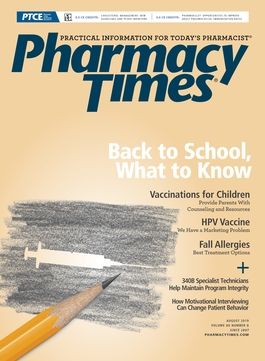Publication
Article
Pharmacy Times
Here Is What Telepharmacy Advocates Get Wrong
Although the progression to automated technology and delivrey brings convenience, it eliminates face-to-face relationships.
SOCIAL NETWORKS DRIVE HUMAN BEHAVIOR
Social networks are a well-established phenomenon that helps explain human behavior. Whether they comprise a community church, a weekend softball league, or a workplace, social networks play an incredibly influential role in our day-to-day lives. Our means of interaction and the people in our network are highly predictive of all our choices, from what we buy to how we approach our health and well-being and even how we vote.
SOCIAL NETWORKS ARE BUILT MOSTLY ON IN-PERSON RELATIONSHIPS
Nearly every personal relationship, even in the age of the internet, starts with a face-to-face introduction. Go to your Facebook account and see what percentage of your friends fall into the following categories: met in school where I grew up, met in college, met through family and friends, met through work, met through kids, and met online but built the relationship in person. Despite the digital age, social media networks are largely born from in-person relationship building. Meaningful interpersonal relationships rarely arise and persist without a foundation of personal conversation and interaction. The belief that we do not need face- to-face relationships is pernicious and corrosive to our society.
THE DOCTOR—PATIENT RELATIONSHIP
No doubt that through your experience and training, you have learned about the doctor—patient relationship and its importance in building trust, context, and continuity of care. A cornerstone of primary care and arguably what should be the cornerstone of pharmacist care, the relationship between a care team member and the patient drives much of the patient response or lack thereof to a plan of care.
Unlike an appendectomy, a knee replacement, or a sinus infection that you picked up on vacation, chronic diseases endure and require health care professionals who do not work on patients but work with them. After all, we have learned over the past few decades about patient nonadherence, ill-coordinated care, and the connection between the frequent failure of medical interventions in chronic conditions and depression, psychosocial needs, and other social determinants of health and the need for meaningful and trusted relationships with the care team to resolve.
AMERICA SUFFERS FROM A LACK OF RELATIONSHIPS AND ‘DESPAIR’
The Lancet has published several articles detailing how Americans’ continued decline in average life expectancy, in addition to its link to diet and lack of exercise, is largely driven by suicides and unintentional poisonings, medical speak for illicit drug use and opioid abuse. The contributors to the fields of study that track such things now refer to our collective American lack of health and well-being as a condition of “despair,” much of it related to a dearth of meaningful and supportive interpersonal relationships.
How can it be that we are addicted to social media, which in theory means we can interact with more than a billion people, yet we still suffer from despair and lack of relationships? The answer may be that we were designed for good old-fashioned face-to-face relationships and fellowship, where taking care of your neighbors has been a way of life since we started walking on this earth.
WHAT IS THE ROLE OF TELEPHARMACY?
Telepharmacy plays an important role on 2 fronts. First, it is generally cheaper than an in-person meeting with a health care professional; second, it is necessary when no health care professional is available. Most medication therapy management services in the United States are delivered through remote call centers and are generally quite profitable. No doubt some meaningful relationships have emerged during those millions of online sessions. But what about the tens of millions that have not? What is lost by not investing in local care providers and preserving critical pharmacist infrastructure across the country? Instead of supporting local care team members, telepharmacy seems to have become an industry unto itself, competing with local care team members.
More than 60,000 community-based pharmacies practice local telepharmacy every day in the United States. Clearly, not every interaction with a patient has to be face-to-face to be effective. Whether it involves answering a question about a medication, calling in for lab results, preparing to fill a prescription, or verifying a drug regimen, telepharmacy is the most frequently used mode of communication, through the phone, video applications, or other means of connecting patients and their care team members. Yet how many of those interactions with patients begin with “It was good to see you at...” and end with “When you get to the pharmacy, we will...”?
Telepharmacy is less a revolution in care and more a stopgap because of a lack of care. Does anyone actually believe that telepharmacy provides better care? How would those who do explain it, other than to say that the folks on the other end of the phone are better trained, are more connected to a plan sponsor, are integrated with medical records, or have better software? If those are the explanations, what is getting in the way of doing all of that locally?
Troy Trygstad, PharmD, PhD, MBA, is vice president of pharmacy programs for Community Care of North Carolina. He also serves on the board of the American Pharmacists Association Foundation and the Pharmacy Quality Alliance.







